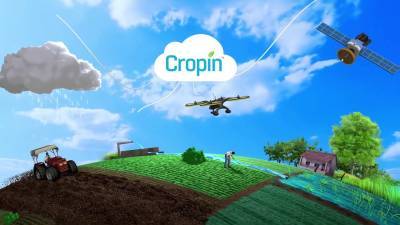MUMBAI, 13 January 2023: As the world population continues to grow and the challenges facing the food industry persist, it is important for all of us to work towards the goal of providing enough nutritious food for 9 billion people by 2050.
To overcome issues such as climate change, supply chain disruptions, geopolitical tensions, and rising food prices, agri-food companies, governments, and farmers are increasingly adopting technology to shape the future of food systems. In 2023, it is crucial to keep an eye on the following technology trends in the industry.
Satellite Data Fuels Advances in Agritech
Satellite data has become more widespread, efficient, and cost-effective. The use of hyperspectral satellites allows for higher-resolution images of farms, providing detailed information about each pixel and reducing the need for expensive sensors. Sensors can be useful in certain situations but are costly to maintain and need to be more easily scalable.
With satellite data, farmers can access a range of information, including atmospheric and soil temperature, soil nutrients, carbon emissions, moisture levels, and local weather conditions, making crop cultivation more reliable and efficient.
Satellites are also helping enterprises track and achieve their environmental, social, and governance (ESG) goals, such as becoming carbon neutral and purchasing carbon credits.
Enhanced satellite data can help monitor deforestation and reforestation levels, the presence and quality of water bodies, and more. The advancements in satellite technology will drive the adoption of technology in agriculture, particularly in developing markets where smallholder farmers may need assistance to afford sensor deployments on a large scale.
Meanwhile, farmers in developed markets can optimize their technology spending by saving on sensor deployment costs.
The growing impact of cloud computing
The future of food is closely tied to cloud computing, and it has become so essential to agriculture that it is hard to imagine how the industry would function without it. Cloud computing allows agribusinesses to manage multiple technology solutions efficiently, vast amounts of data, predictive intelligence models, and other proprietary business intelligence tools under a single platform, helping to make important farming and business decisions.
A specialized agriculture cloud platform can significantly reduce the time it takes for technology investments to pay off, lower barriers to innovation within the agriculture ecosystem, and bring together the capabilities needed to address major challenges. Many companies in the agriculture sector spend a lot of time and resources building fundamental technology infrastructure rather than focusing on innovation and intellectual property development in their specific areas of business.
Just as railways were once a symbol of growth and prosperity, the agriculture cloud will become the central focus for new applications and developments by agtech companies, particularly as concerns about data security and privacy continue to dissipate.
High-speed 5G networks connecting the global agriculture ecosystem
The rollout of 5G technology is revolutionizing numerous industries by improving decision-making, production processes, and factory operations.
Agriculture is also seeing significant benefits from this advanced technology due to its low latency, increased network capacity, and reliable high-speed data transfer. With 5G, transferring large amounts of data such as images, videos, 3D models, weather, and topographical information from connected farms can be quick and easy, saving time and improving AI/ML modelling accuracy.
For example, data from the numerous cameras in a connected farm can be transferred with just one click, a task that previously took days using traditional networks. Overall, 5G will help accelerate agriculture's digitization for farmers and businesses.
Integration of the agri-ecosystem
The agriculture ecosystem is complex and includes a range of stakeholders, such as seed manufacturers, farming and food processing companies, technology providers, and governments. These stakeholders often operate independently of one another, which can limit innovation and collaboration. However, there is a trend towards agri-digitization to address issues like food insecurity, climate risk, and supply chain disruptions.
As a result, there will be increased collaboration between stakeholders in the value chain in 2023. Agritech companies will facilitate partnerships and information sharing and will be critical enablers within the agri-ecosystem.
For example, virtual agronomists can be made available to millions of farmers around the world, allowing a single expert to monitor multiple farms. Additionally, purpose-built industry cloud platforms for agriculture may provide access to satellite imagery, data, and agri intelligence, enabling experts to identify and address issues throughout the value chain quickly.
By Rajesh Jalan, CTO and Head of Engineering, Cropin























